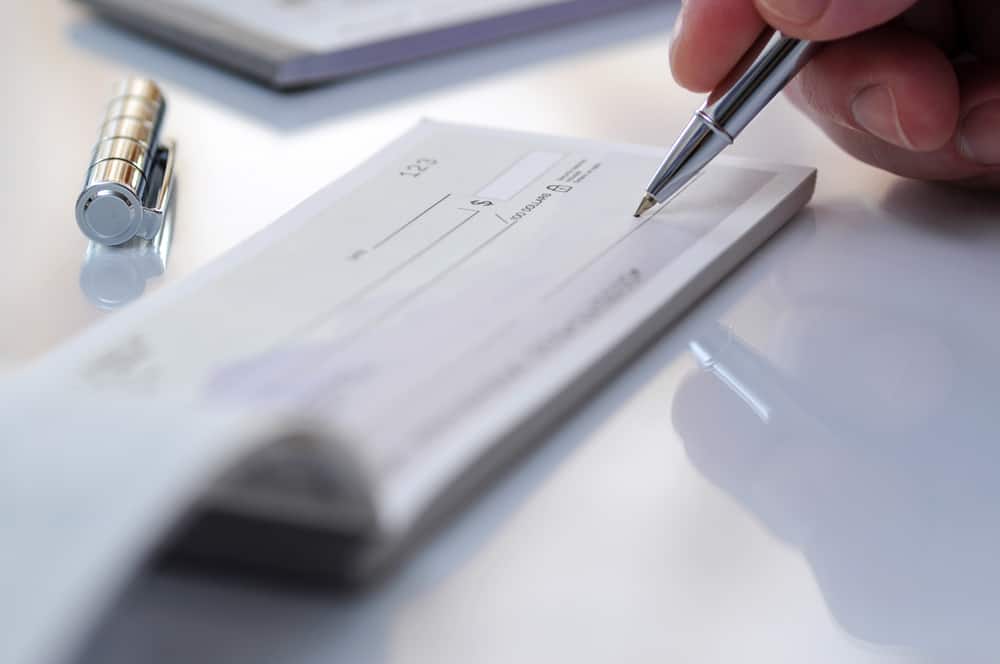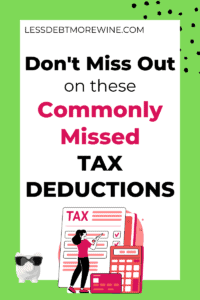How to Make Budgeting Easy With Multiple Checking Accounts
THIS POST MAY CONTAIN AFFILIATE LINKS. MEANING I RECEIVE COMMISSIONS FOR PURCHASES MADE THROUGH THOSE LINKS, AT NO COST TO YOU. PLEASE READ MY DISCLOSURE FOR MORE INFO.
Very few people love to budget and if you aren’t one of them I don’t blame you. While I generally enjoy budgeting now, it wasn’t always the case.
One thing that made budgeting for me way easier and more enjoyable was using multiple bank accounts.
Checking Accounts For Expense Types
When budgeting you generally are looking at two types of expenses.
First, fixed expenses where the amount is consistent every month, an example would be rent.
Second, varied expenses, where the amount you spend changes from month to month, an example would be groceries.
When I first decided to use multiple bank accounts to help me budget, my idea was that I would use the second bank account to save up for big annual expenses, such as car insurance.
However, what I found was that I was still not successfully sticking to my budgeted amounts for varied expenses. I was overspending, which is no bueno.

Enter, separate accounts for the types of expenses I have each month. Instead of a bank account to save for big expenses, I used separate savings accounts for those expenses and used the second bank account for my varied expenses.
I should note that I use multiple savings accounts to ensure I’m saving enough for each big annual expense.
Typically, the only varied expenses I have each month are for groceries, gas, and entertainment. By setting a budget for all three, I make sure that amount gets deposited into the second checking account, or spending account.
Voila, I have a limited amount of money I can spend on my varied expenses, ensuring I don’t go over budget.
How Multiple Accounts Makes Budgeting Easy
Having separate accounts for my fixed expenses and one for my variable expenses has resulted in a lot less stress.
For example, when I moved in 2015 I decided to hit pause on many of my money goals, like paying extra on my debt, the extra money that built up in my fixed expenses checking account stayed there.
I didn’t end up spending it on other things and then wondering where it went.
The hardest part of budgeting with multiple bank accounts was figuring out how much to budget.
Hopefully, you have got that part down and are only struggling with sticking to your budget. If that isn’t the case you can check out my post How to Budget Successfully Every time.
Once I knew how much to budget I had to set up a second bank account.
Choosing A Second Checking Account
If you don’t already have multiple bank accounts, you’ll need to choose a second bank account, then I recommend you shop around for one that offers you a bonus.
Originally I chose CapitalOne 360 checking. I chose CapitalOne 360 for several reasons. First, it was a different bank from my regular checking. Second, it is fee-free with no minimum balance requirement and even gives you a free set of checks (for the rare occasion I need them). Third, it came with a $50 bonus.
I have since moved on to using Chime.
I moved to Chime because it comes with a great automatic savings and bonus program. It rounds up each purchase and moves that spare change into a savings account.
Chime works by starting a spending account (takes 5 minutes) and opting into the automatic savings plan. (Learn more about getting started with Chime).
Every time I use the Chime Debit Card it rounds up my purchase to the nearest dollar and puts in in savings.
All those withdrawals add up over time. Chime is free to use, with no monthly fees. With Chime, you end up saving money without having to think about it.
Still Overspending?
So you’ve set up your multiple bank accounts for your varied expenses but still find yourself overspending, now what?
Stop carrying around the debit card for your fixed expenses checking account.
Chances are you can make most of your fixed payments online (an exception maybe being your rent check). You don’t need to carry that debit card around.
If you are really worried about an emergency, then carry around an emergency credit card. But to keep yourself from reckless spending on the credit card, wrap it up in paper and tape so that you would be embarrassed to use it for anything other than an emergency.

Finally, check your budgeting math. You may have miscalculated how much you need for your variable expenses.
Overspending each month is a sign that you need to take another look at your budget and make some adjustments.
Wrapping It Up With A Bow On Top
Having a second account for your varied expenses will help you stay on a budget without having to resort to a cash-only budget or the envelope system.
Just remember that having a separate account helps you to stay on budget but it doesn’t replace the practice of budgeting.
You still need to know how much you are spending each month, where your money is going, and what changes you need to make to ensure you are living within your means.
If you find that having multiple bank accounts doesn’t work for you then consider using the cash-only method [link] or the envelope system [link] as an alternative.
Both of these methods will help you to stay on budget and get your spending under control.
Frequently Asked Questions
If you still have questions about using multiple checking accounts for budgeting, read on! We’ve answered the most common questions below.
How Do I Get Started With the Two Checking Account System?
This system involves having separate accounts for your fixed expenses and one for your variable expenses. Here’s how to get started:
1. Choose a second account. Look for one that offers a bonus, like free checks or no minimum balance requirement.
2. Set up the spending account. This is the account where you’ll deposit your money to be used for variable expenses.
3. Opt into the automatic savings plan. One of the reasons I love Chime is because, Chime automatically rounds up each purchase and puts the spare change into savings, which can add up over time!
4. Start using your debit card for expenses. When you’re out and about, use the debit card associated with your spending account to make purchases.
5. Keep track of your spending. Make sure to keep track of how much money you’re spending each month so that you don’t overspend.
What Do I Do With Money Left Over?
There are a few different options that will help make your money go further.
1. Save it: One option is to save the money, moving it to your emergency fund in case you have unexpected expenses later on. This is a good idea if you’re trying to build up that emergency fund.
2. Invest it: Another option is to invest the money. You could put it into stocks or mutual funds.
3. Use it: Finally, you could use the money to pay down debt or for other expenses. This is a good option if you need to free up some extra cash each month.
No matter what you decide to do with the money, be sure to put it to good use so that you can reach your financial goals.
What About Emergencies?
When you’re using multiple bank accounts to budget, it’s important to have a plan for emergencies. Here are three tips for handling emergency costs when your budget is already tight.
1. Have an emergency fund: This is probably the most important thing you can do to prepare for emergencies. Make sure you have a savings account with enough money to cover unexpected costs.
2. Use a credit card: If you don’t have enough money in your emergency fund, another option is to use a credit card. Just be sure to pay off the balance as quickly as possible so that you don’t end up with more debt.
What are the Benefits of Multiple Bank Accounts
One of the best ways to stick to a budget is by using multiple bank accounts.
This system often called the “two checking account method” or “dual banking,” can help you easily track your spending and stay on budget.
Here are three benefits of using multiple bank accounts for budgeting.
1. Easier tracking
When you have a separate account for each category of expenses, it’s easy to track how much money you’re spending each month. This can be especially helpful if you’re trying to stick to a specific budget.
2. Increased flexibility
Another benefit of using multiple bank accounts is increased flexibility. If one of your accounts runs low on funds, you can easily transfer money from another account to cover the shortfall. This eliminates the need to carry cash around with you and makes it easy to stay within your budget constraints.
3. Peace of mind
Finally, using multiple bank accounts can give you peace of mind knowing that you have a backup plan in case of an emergency.
This can be especially helpful if your spending account is low on funds or if you experience unexpected expenses.

